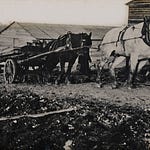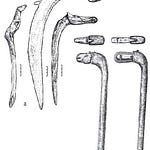Domestication Revolutionized Mobility and Exploration
The taming of horses marked an inflection point in the trajectory of exploration and mobility. Early humans had always trekked across the land on foot, confined within the parameters of what their two legs could carry. But once horses and humans joined forces, suddenly much further horizons came into view. For the first time, humans gained the means to pursue destinations once thought as too distant to reach within a lifetime.
Alongside the wheel and sail, the horse ranks among the most impactful technologies granting us the capability to venture into the largely uninhabited expanses of the globe. Once humans gained the ability to access the immense grasslands and mountain passes made accessible via horseback, the scope of the world they inhabited expanded dramatically.
The emergence of nomadic herding of the Eurasian steppes exemplifies how horse-driven mobility allowed humans to shift from a largely sedentary existence to one of constant movement, unchained from any fixed settlement. The wide grazing lands of the steppes supported vast herds of horses that enabled these tribes to range vast territories in search of fresh pasture - a lifestyle inaccessible to humans prior to the mastery of the horse.
The impact of horses on human exploration extended to remote settlements, colonial conquests and trade routes. The migrations of the Indo-Europeans spread Steppe ancestry and conquered earlier civilisations, establishing powerful trade routes across Eurasia across periods stretching all the way from the Bronze Age 5000 years ago until the demise of the Mongol Empire in the 14th century. The mighty Persian, Greek and Roman empires emerged and extended their influence across three continents in large measure due to horse-based transportation. Horse-drawn carts allowed trade to flourish along trans-eurasian trade routes like the Silk Road, further integrating the Eurasian landmass. From the Yamnaya to Genghis Khan's Mongol hordes sweeping across Asia to the Conquistadors' campaigns in the Americas, mounted warriors leveraged their horse power to expand the reach of their home cultures into previously isolated lands.
The spread of horses also drove human cultural transference around the globe. The transmission of equine-related technologies, practices and artistic motifs accompanied the movement of horses themselves from place to place. Horse breeding, veterinary care, saddlery and equestrian activities diffused across disparate societies once linked through horse trading and ownership. Even linguistics was affected as horse-related vocabularies infiltrated indigenous tongues, while loanwords describing novel horse gear traveled in the opposite direction.
The previously mentioned Silk Road, which connected China and the Mediterranean world, is a worthy example of how the domestication of horses accelerated mobility. The Silk Road was a trade route that facilitated the exchange of goods and ideas between the East and the West. The use of horses for transportation made it possible to transport goods across long distances between Asia and Europe, and the Silk Road became a vital conduit for trans-Eurasian trade and cultural exchange. The Silk Road also enabled the exchange of ideas between different cultures and led to the spread of belief systems such as Buddhism, Islam and Christianity. The speed of travel made possible by horseback riding allowed for goods to be transported more quickly and efficiently than ever before, leading to increased trade and economic growth.
The American frontier was opened up by the use of horses, which allowed settlers to travel long distances and explore new lands. Horses and cavalry played a decisive role in conquering and defending new territories, and subduing indigenous population under colonialist European rulers. Following the pattern of conquest and warfare established by early Indo-Europeans, in the conquest of the Americas too, cavalry and horse-centered warfare tactics gave European colonists a significant military advantage, enabling them to exert dominance over the indigenous peoples of the Americas, who had no horses and were only able to fight on foot against the invading cavalry. Horses and wagons were used in the Americas over centuries in agriculture, warfare and transport. On horseback, the american frontier was opened, lands were plowed, people traveled, and wars were fought. The riders of the Pony Express enabled communication across vast distances on horseback.
Horse effigy, Lakota Sioux, Dakotas, 19th c., Museum of the South Dakota State Historical Society, Pierre, SD













Horse Power | E04 | Domestication Revolutionized Mobility and Exploration